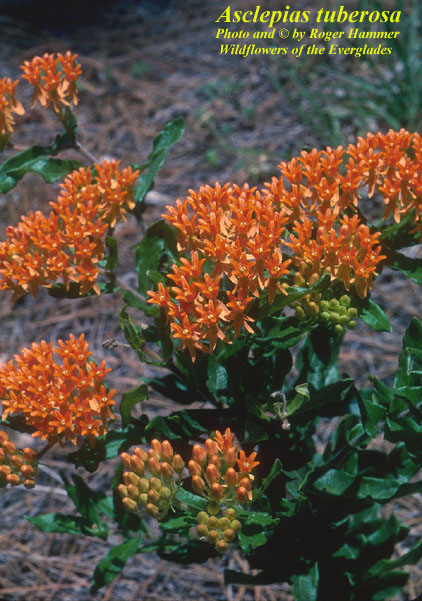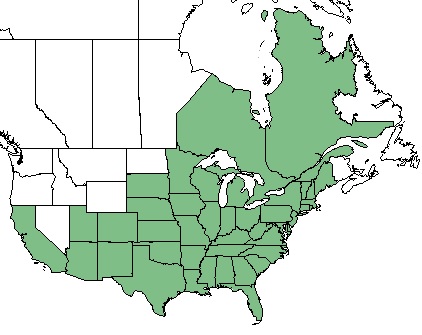Difference between revisions of "Asclepias tuberosa"
(→Taxonomic Notes) |
|||
| Line 20: | Line 20: | ||
==Taxonomic Notes== | ==Taxonomic Notes== | ||
| − | Varieties: ''A. tuberosa'' var. ''interior''; ''A. tuberosa'' var. ''rolfsii''; ''A. tuberosa'' var. ''tuberosa''<ref name="Weakley 2015"/><br> | + | Varieties: ''A. tuberosa'' var. ''interior''; ''A. tuberosa'' var. ''rolfsii''; ''A. tuberosa'' var. ''tuberosa''.<ref name="Weakley 2015"/> |
| + | Other sources list these three varieties as subspecies.<ref name="USDA"/><br> | ||
Synonyms: ''A. rolfsii''; ''A. decumbens''<ref name="Weakley 2015"/> | Synonyms: ''A. rolfsii''; ''A. decumbens''<ref name="Weakley 2015"/> | ||
Revision as of 10:05, 13 February 2018
| Asclepias tuberosa | |
|---|---|

| |
| Photo by the Atlas of Florida Plants Database | |
| Scientific classification | |
| Kingdom: | Plantae |
| Division: | Magnoliophyta - Flowering plants |
| Class: | Magnoliopsida - Dicots |
| Order: | Gentianales |
| Family: | Asclepiadacea |
| Genus: | Asclepias |
| Species: | A. tuberosa |
| Binomial name | |
| Asclepias tuberosa (L) Brittonex Vail | |

| |
| Natural range of Asclepias tuberosa from USDA NRCS Plants Database. | |
Common Names: midwestern butterfly-weed; sandhills butterfly-weed; common butterfly-weed;[1] butterfly milkweed; Rolfs' milkweed[2]
Contents
Taxonomic Notes
Varieties: A. tuberosa var. interior; A. tuberosa var. rolfsii; A. tuberosa var. tuberosa.[1]
Other sources list these three varieties as subspecies.[2]
Synonyms: A. rolfsii; A. decumbens[1]
Description
Asclepias tuberosa is a dioecious perennial forb/herb.[2] Flowers can be a yellow to yellowish orange or a deep-orange to reddish.[1]
Distribution
This species is found from Quebec and Maine, westward to Ontario and Minnesota, southwestward to South Dakota, Colorado, Utah, Arizona, and California, and southward to central Texas, the Gulf Coast, and peninsular Florida.[2]
Ecology
Habitat
A. tuberosa occurs in dry forests, roadbanks, sandhills, woodland margins, roadsides, and pastures.[1]
Phenology
In the southeastern and mid-Atlantic United States, A. tuberosa flowers from May through September and fruits from August through September.[1]
Use by animals
This species composes 2-5% of the diet of some large mammals and terrestrial birds.[3]
Conservation and Management
Cultivation and restoration
Photo Gallery
References and notes
- ↑ 1.0 1.1 1.2 1.3 1.4 1.5 Weakley AS (2015) Flora of the Southern and Mid-Atlantic States. Chapel Hill, NC: University of North Carolina Herbarium.
- ↑ 2.0 2.1 2.2 2.3 USDA NRCS (2016) The PLANTS Database (http://plants.usda.gov, 13 February 2018). National Plant Data Team, Greensboro, NC 27401-4901 USA.
- ↑ Miller JH, Miller KV (1999) Forest plants of the southeast and their wildlife uses. Southern Weed Science Society.